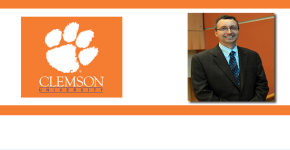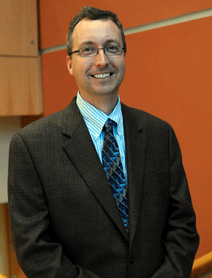Football players can have as many as 2,000 brain-jarring hits per year.
John DesJardins, Assistant Professor of Bio-engineering, explores the ways scientists are fighting back against head injuries in sports.
Dr. John DesJardins is an Assistant Professor of Bio-engineering at Clemson University. He received his Ph.D. in Bioengineering from Clemson University in December 2006, and has worked for over 20 years as a biomechanical research engineer. He has co-authored over 150 peer-reviewed conference or journal publications in the areas of biomechanics, biomaterials tribology, engineering education and mechanical testing. He is the director of the Laboratory of Orthopaedic Design and Engineering at Clemson University, and the Frank H. Stelling and C. Dayton Riddle Orthopaedic Education and Research Laboratory at CUBEInC. He currently leads or is a co-PI on many multi-disciplinary research teams on projects funded through NASA, DoT, NSF, the Gates Foundation, biomedical industry and other regional non-profit foundations. As an assistant professor in Bioengineering, he is the director of the senior capstone design courses, where he mentors 15+ small teams annually to develop innovative biomedical devices in partnership with local industry or clinical partners. He founded and directs the Clemson University Retrieval of Explants Program and Registry in Orthopaedics (CU-REPRO) which is a regional repository that collects and studies explanted total joint devices. Finally, he is the founder of the undergraduate bioengineering study abroad programs, and directs or assists with international programs in Spain, Singapore and Tanzania.
Football Helmet Research

A football player can have as many 2,000 head-jarring contacts a season. Nearly a quarter million children were treated for sports related traumatic brain injuries including concussions, according to a 2009 CDC study. Scientists are not sitting on sidelines in the search for safer head protection.
In collaboration with Dr. Greg Batt in Packaging Science, our lab’s research supports the national Head Health Initiative, an alliance of public and private organizations working on three challenges. One is better tools for doctors to detect brain injury; two is creating new ways to monitor head impacts as they happen; and three is to develop improved energy-absorbing and energy-reducing materials.
We involved in materials development and analysis. We focus on testing and standards. Before new materials are used in helmets we have to know how to compare them and evaluate their effectiveness.
Football helmets have come a long way since the era of leather headgear. Today’s polycarbonate plastics offer durable, affordable protection to prevent a cracked skull and lessen risk of brain injury. Other sports, too, have improved head protectors, but the fact remains: No helmet is concussion proof.
To a biomechanical engineer and packaging scientist, the problem is clear: we can protect the skull but it’s much harder to protect the brain from concussion.
Imagine the skull and brain as an egg. Wrap the egg in foam, coating it with a hardshell making a form-fitting container. Whack it with a bat and, if the design and materials work, the eggshell won’t break. But the yolk — the brain — likely will have been sloshed around and damaged. Perhaps not much the first time, but repeated hits can scramble it.
That’s not the worst part. Bat whacking is an example of linear force — a straight on impact. Research shows that rotational force — impact that causes a twisting head motion — can be more dangerous for the brain.
My involvement is personal as well as professional. My two sons, 11 and 16, play soccer, a sport facing the need for head protection, and they ride bicycles, which has twice the brain injury rate of football among youngsters. I insist they wear bike helmets. I have two wonderful reasons for making helmets safer.



Comments
One response to “John DesJardins, Clemson University – Football Helmet Research”
Perfect segment for kick-off!